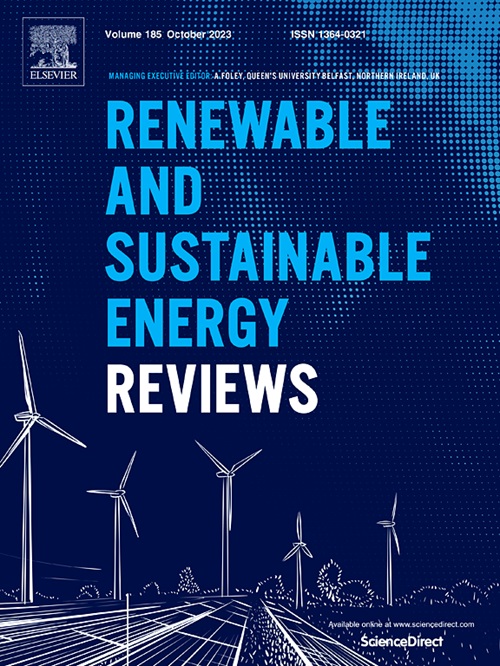揭示效益:分析小水电整修活动的框架
IF 16.3
1区 工程技术
Q1 ENERGY & FUELS
引用次数: 0
摘要
小水电是中国重要的可再生能源,在实现社会、经济和生态可持续发展目标方面发挥着重要作用。然而,小水电的快速发展引发了各种问题,导致许多小水电站关闭或拆除。为了最大限度地发挥小水电的积极影响,迫切需要进行绿色改造和小水电站升级。因此,开展了小水电翻新活动,以提高整体效益。因此,本研究将定性研究方法--基础理论与综合决策试验和评估实验室--模糊分析层次过程评估模型相结合。这就形成了一个分析整修活动的新框架,并将其应用于唐板电站和茅岩洞电站。小水电整修活动效益分为内部效益(直接经济效益和间接生产效益)和外部效益(社会效益和生态效益),两者之间存在相互联系和权衡。影响效益的最关键因素是内部因素,而社会效益对外部因素的影响更大。由于企业性质、地理位置和主要业务重点的不同,唐板和茅岩洞的翻新活动分别被评为高和中等。本研究不仅为中国小水电在可持续运营前提下实现联合国可持续发展目标提供了理论模型,而且为小水电评估和决策提供了新的全球框架。本文章由计算机程序翻译,如有差异,请以英文原文为准。

Unveiling benefits: A framework for analyzing small hydropower refurbishment activities
Small hydropower is a crucial renewable energy source in China and plays a significant role in achieving social, economic, and ecological sustainable development goals. However, rapid Small hydropower development has led to various issues, resulting in closure or dismantling of many Small hydropower plants. To maximize the positive impact of Small hydropowers, green transformation and Small hydropower plant upgrades are urgently required. Hence, Small hydropower refurbishment activities are performed to enhance overall benefits. Therefore, this study integrated grounded theory, a qualitative research method, with a comprehensive decision-making trial and evaluation laboratory-fuzzy analytic hierarchy process evaluation model. This formed a new framework to analyse refurbishment activities and was applied in Tangban and Maoyandong plants. Small hydropower refurbishment activity benefits were categorized as internal (direct economic and indirect production benefits) and external (social and ecological benefits), with interconnections and trade-offs. The most critical factors influencing benefits were internal factors, whereas social benefits had a greater influence on external factors. The refurbishment activities at Tangban and Maoyandong were rated high and moderate, respectively, owing to differences in corporate nature, location, and primary business focus. This study not only provides a theoretical model for China’s Small hydropower to achieve the United Nations Sustainable Development Goals under the premise of sustainable operations, but also offers a new global framework for evaluation and decision-making in Small hydropower plants.
求助全文
通过发布文献求助,成功后即可免费获取论文全文。
去求助
来源期刊

Renewable and Sustainable Energy Reviews
工程技术-能源与燃料
CiteScore
31.20
自引率
5.70%
发文量
1055
审稿时长
62 days
期刊介绍:
The mission of Renewable and Sustainable Energy Reviews is to disseminate the most compelling and pertinent critical insights in renewable and sustainable energy, fostering collaboration among the research community, private sector, and policy and decision makers. The journal aims to exchange challenges, solutions, innovative concepts, and technologies, contributing to sustainable development, the transition to a low-carbon future, and the attainment of emissions targets outlined by the United Nations Framework Convention on Climate Change.
Renewable and Sustainable Energy Reviews publishes a diverse range of content, including review papers, original research, case studies, and analyses of new technologies, all featuring a substantial review component such as critique, comparison, or analysis. Introducing a distinctive paper type, Expert Insights, the journal presents commissioned mini-reviews authored by field leaders, addressing topics of significant interest. Case studies undergo consideration only if they showcase the work's applicability to other regions or contribute valuable insights to the broader field of renewable and sustainable energy. Notably, a bibliographic or literature review lacking critical analysis is deemed unsuitable for publication.
 求助内容:
求助内容: 应助结果提醒方式:
应助结果提醒方式:


